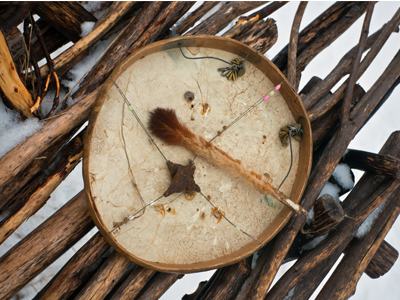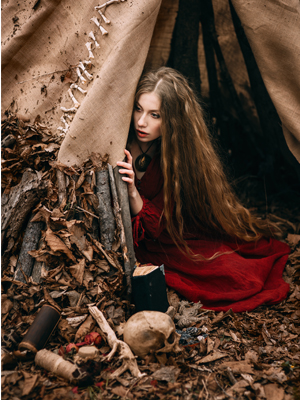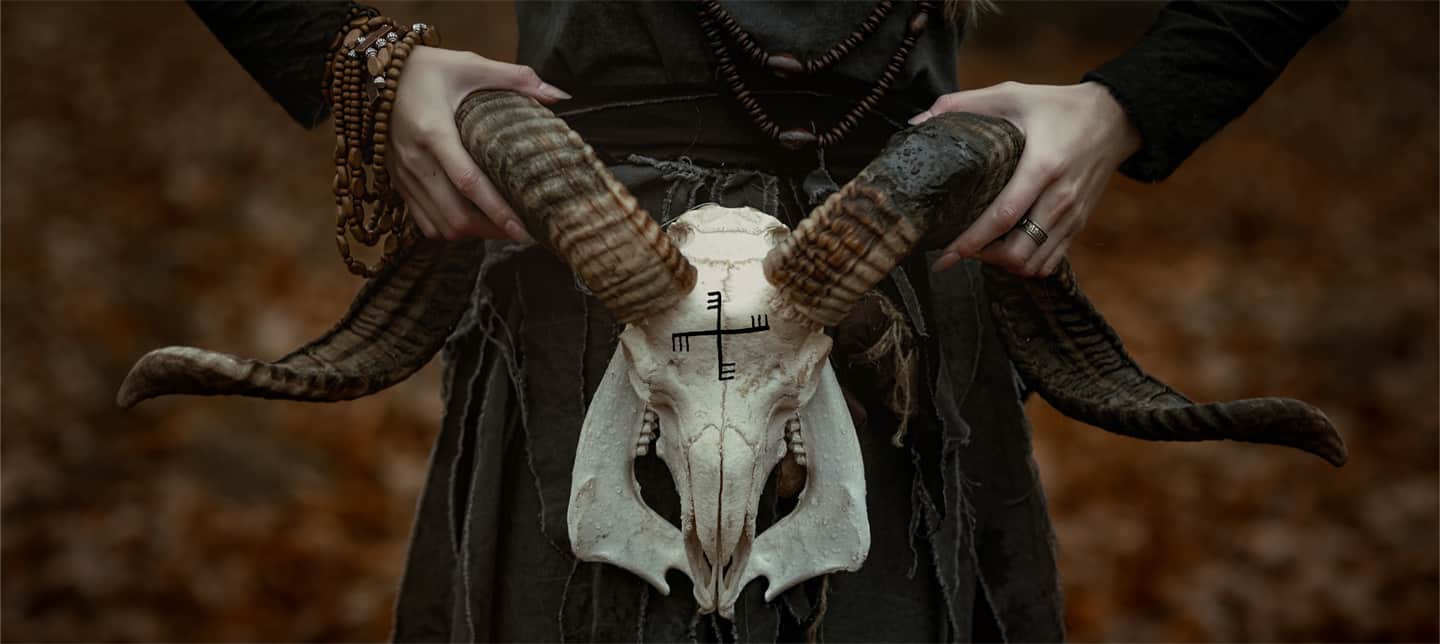The practice of Seiðr
The practice of Seiðr and what Seiðr (“cord”) could be, has become more important. Seiðr seems to have many shamanic traits. Anthropologists use the term shamanism in order to refer to indigenous cultures and a set of practices and Seiðr (ð pronounced like “th”) can be understood as a spiritual practice with shamanic techniques until the middle and late Viking Age.

Compared to the Sami, Seiðr uses singing instead of drumming. The seidr woman (seiðkona), seidr man (seiðmaðr), or vǫlva are the ones establishing contact with the spirit world and the Underworlds.

There are 4 Aspects of Germanic spiritual practice: Galdr, rune magic, seidr and utiseta. Today, we need to reconstruct Norse Germanic Paganism, which in essence means: The written original sources that we have are few and between, we need to study them in detail in order to fill in the missing puzzle pieces, without too much speculation. Written sources are: Edda-poems (often heavily influenced by Christianity) and few sagas from late Viking age and early middle ages, again influenced by Christian theology.
The Islendingasögur talks about prophets, sorcerers and remains have been found within graves that conclude shamanic practice: we can see shamanic traits that conclude the practice of said techniques. Magnús Hákonarson refers to Galdrar, “Galdrar ok gerningar”, as a singing sorcery. In the Poetic Edda, Odin says that the Runes derive from prophecy. In Baldrs Draumar, Odin uses a spell to resurrect a völva. Odin, it seems, is an Archetype, of initiation into shamanic techniques. In Eiriks Saga Porbjörg communicates with spirits via ritual and singing.
Norse Germanic Paganism or Germanic Spirituality evolved over a long time and has its roots in early Proto-Indo-European culture as I’ve said before as Old Norse is a dialect that seperated from Proto-Norse and later split into an Eastern and Western branch. The root and origin of the Germanic languages is Proto-Germanic. There was a shift in pronunciation that is known under “Grimm’s law” when it separated from Proto-Indo-European.

Academic research points to the fact, that Seiðr itself might originate in the Iron Age, fertility cults and ancient types of shamanism, making it much older than the written sources and the Viking Age itself.
There’s similarities to Finnish runolaulo, the Sami joik and Seiðr singing and they could have influenced another. The constant contact with the Otherworlds, healing and contact with the spirit world points to a deeply animistic worldview and practice, which is characteristic for many hunter-gatherer cultures.
So how old is it? And what is it?
We don’t really know, and that is the truth. Seiðr might be ancient, a link to animistic practice, (maybe) older than Germanic/Celtic cultures: There’s many open questions as it is not a revealed practice. There is no clear answer on how it was practiced but we might have a look at the Saami of Lapland and study their beliefs. It is highly likely that North Germanic tribes did exchange spiritual practice with Finno-Ugric people such as the Saami and the practice of Seiðr might be a result of that.
Early Medieval Scandinavians and the Saami have had contact and might have exchanged both culture and spiritual practice. The Yggdrasil, the shamanic Axis Mundi, is very common in Finno-Ugric cultures, can be found amongst Siberian shamanic cultures and even in Native American cultures. The nomadic lifestyle of Paleo-Siberians and many Native American cultures is shared with our own Ancestors, if we go far enough back in time.
If this interests you I’d like to recommend the Books “The Viking Way” and “The Viking World” by Prof. Neil Price and Prof. Stefan Brink. Please click here to read more about the beautiful culture of the Sami.





